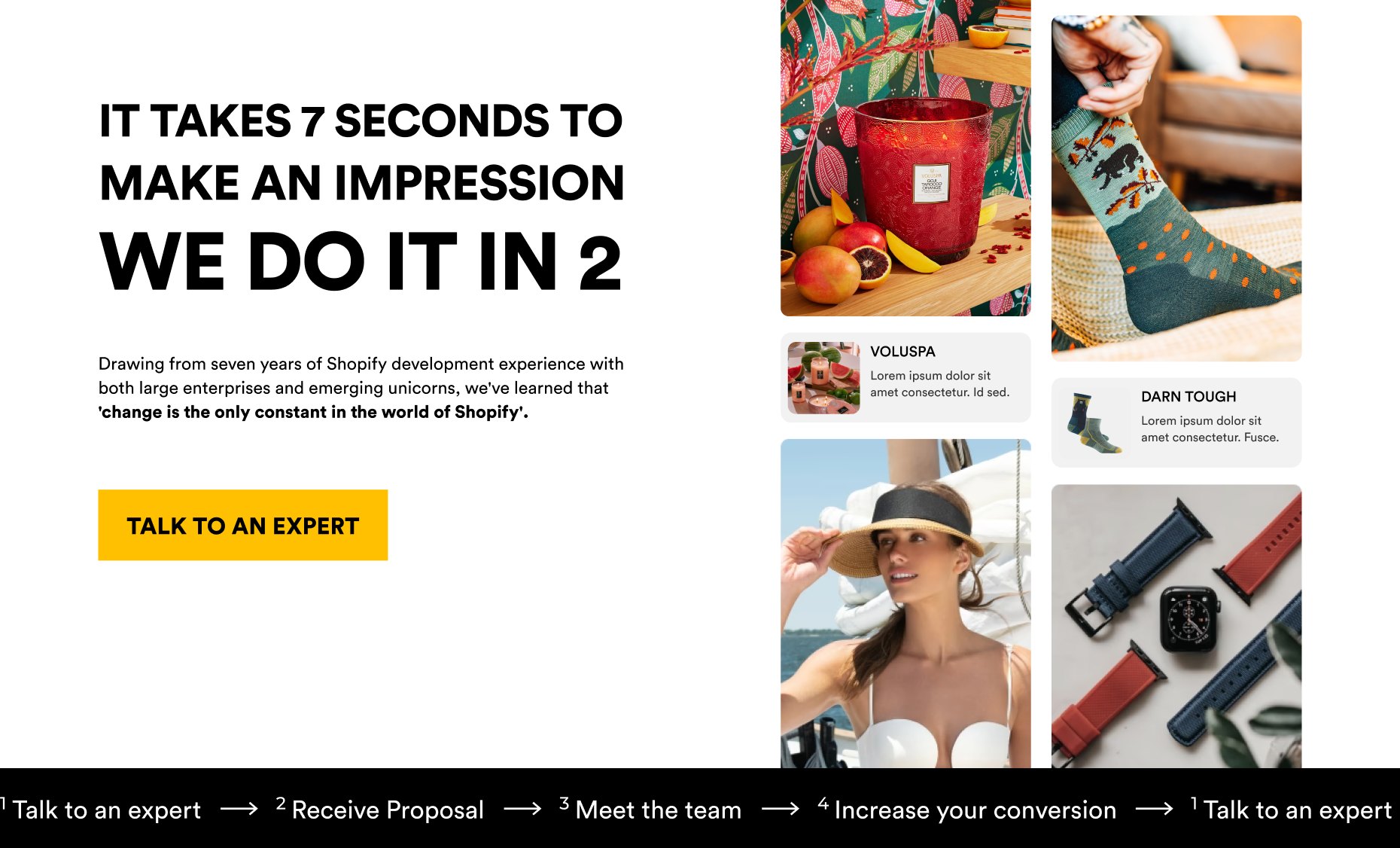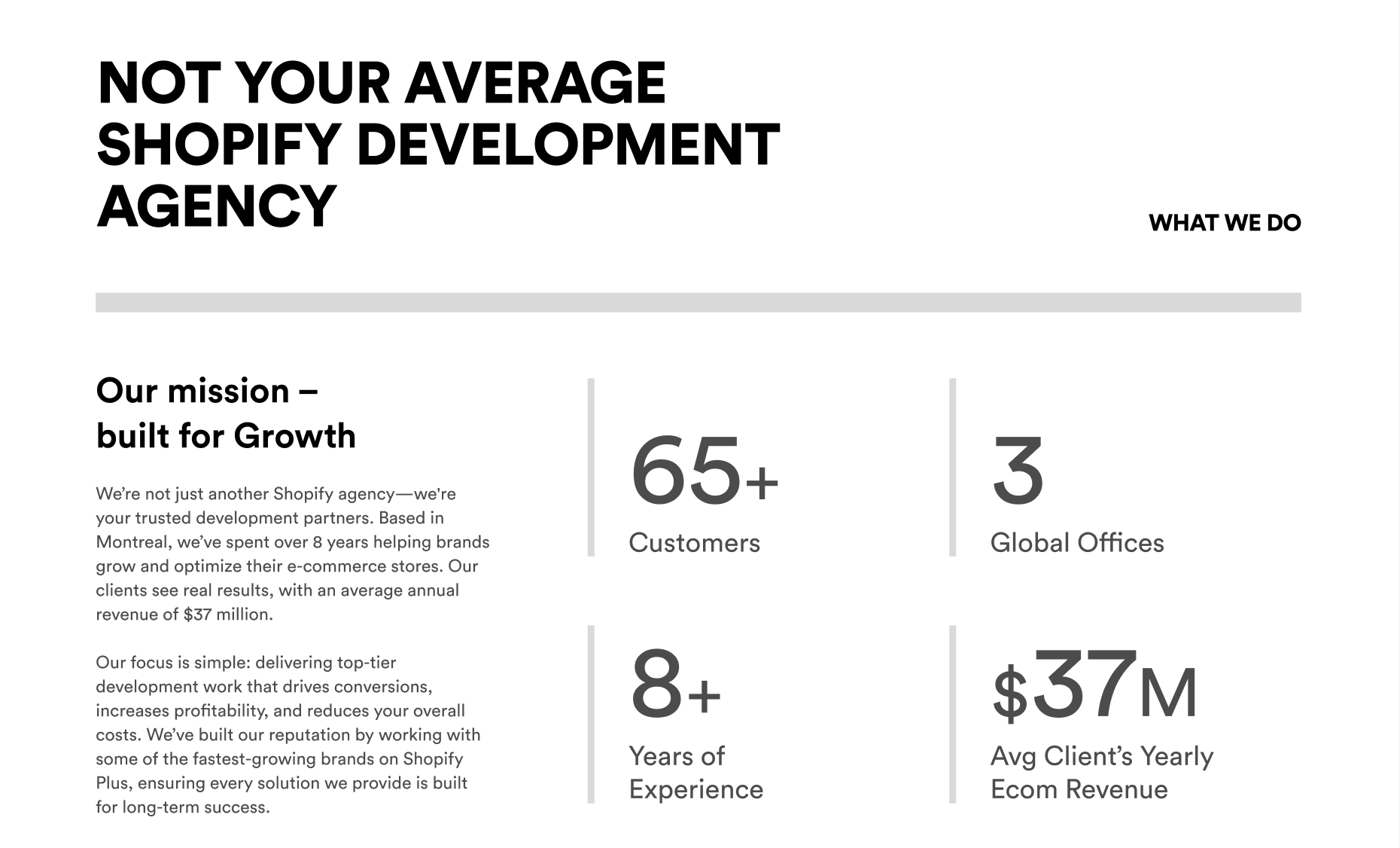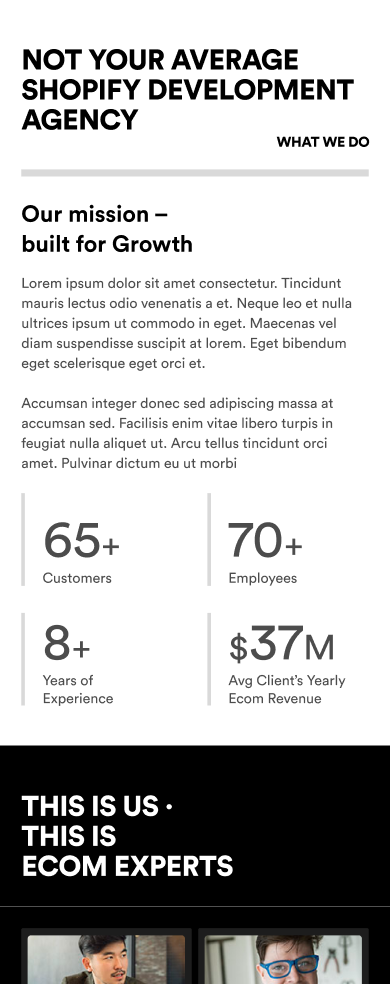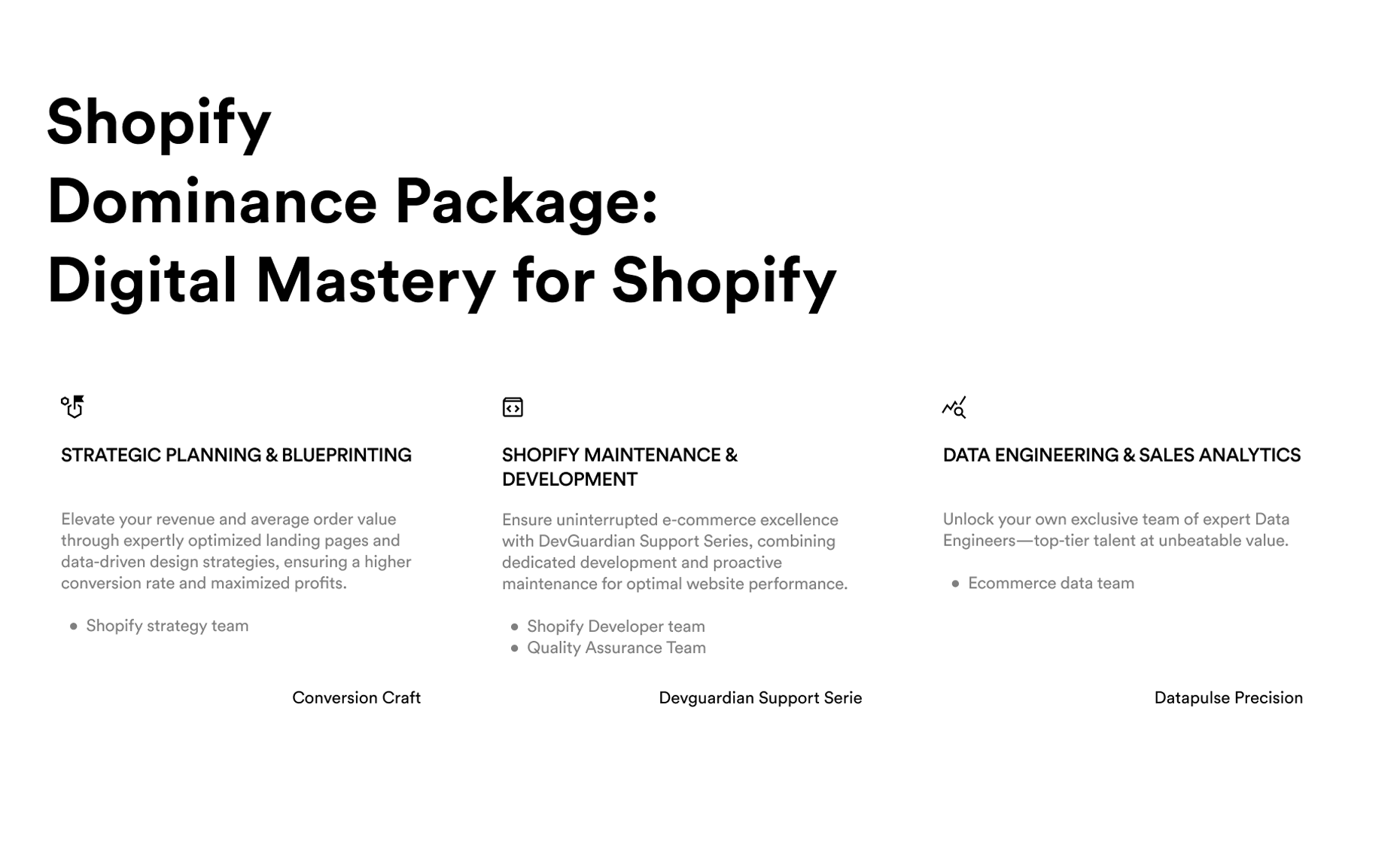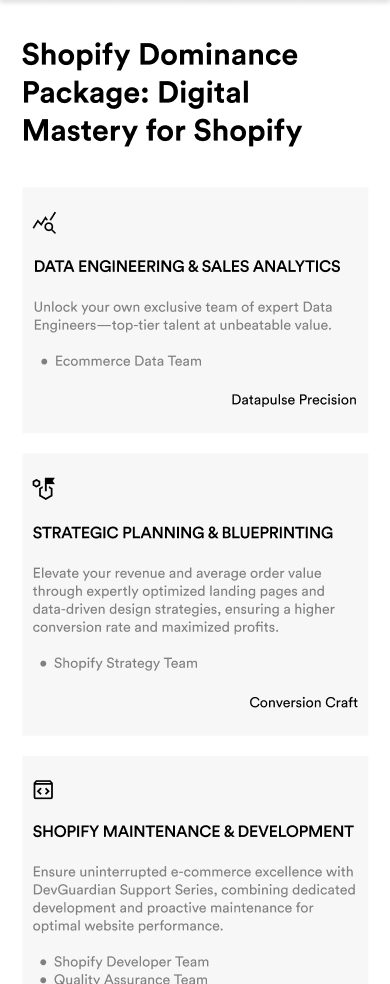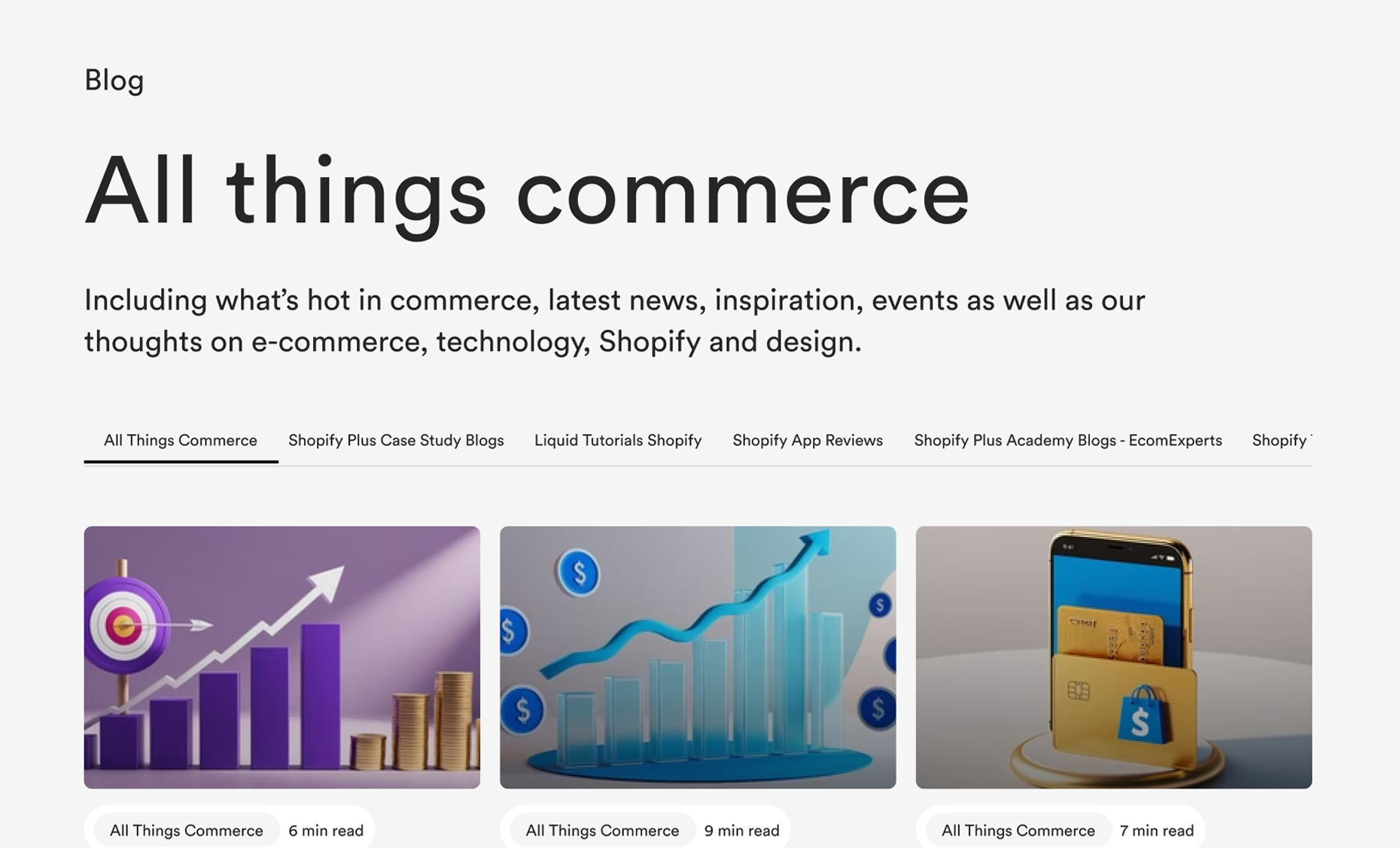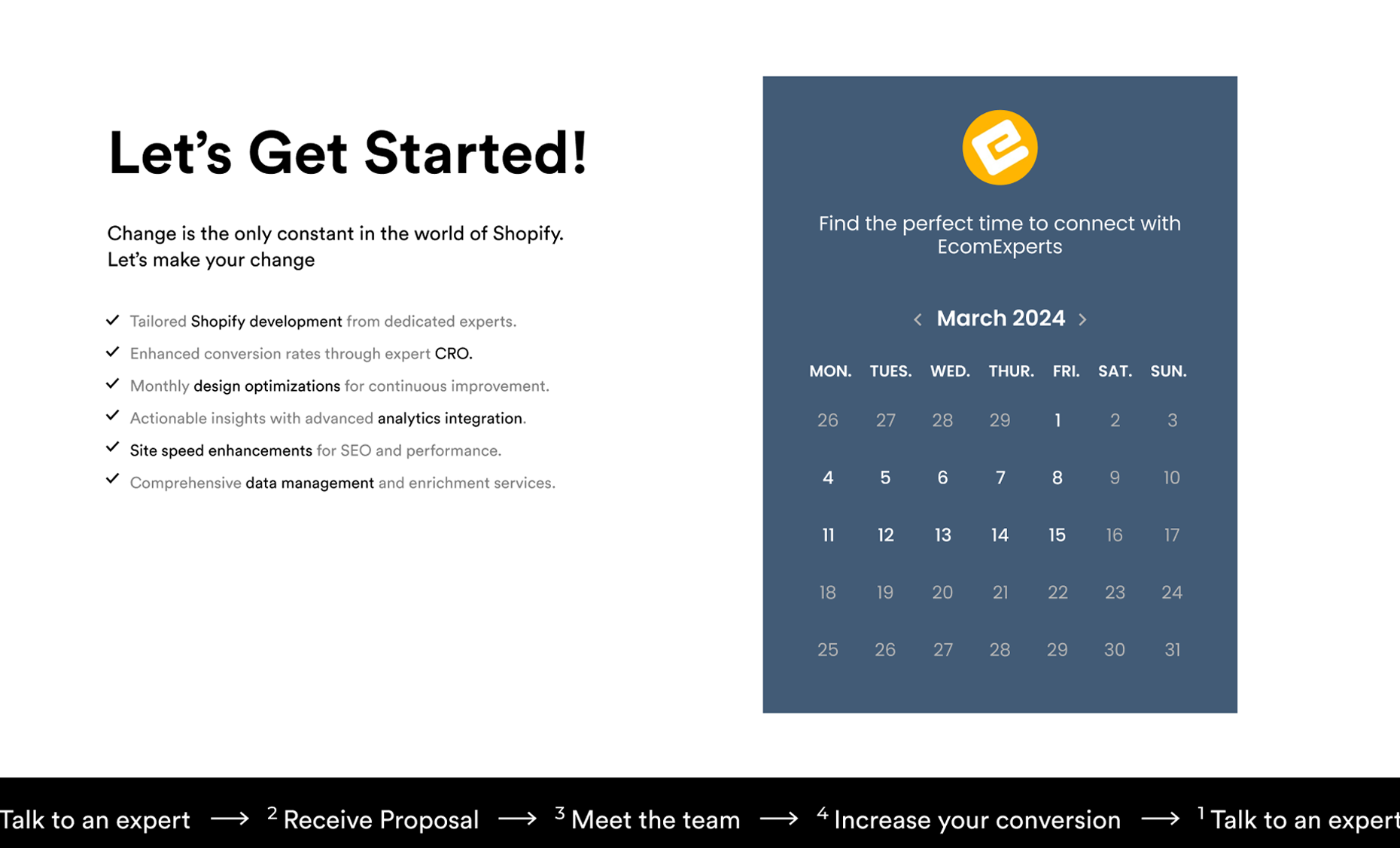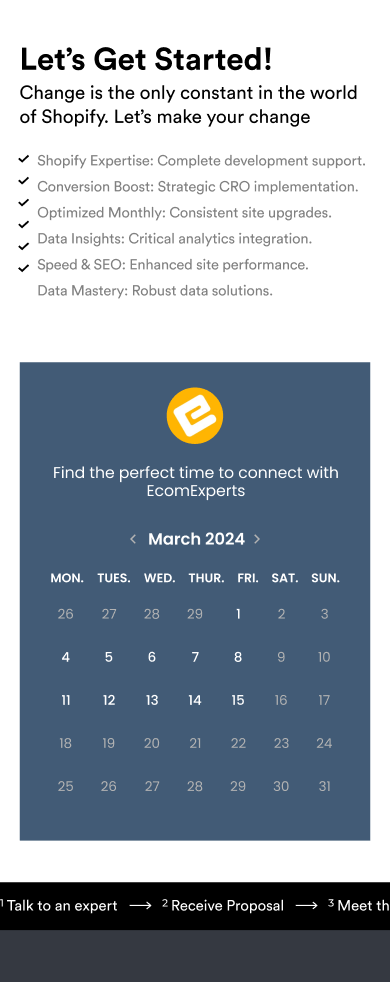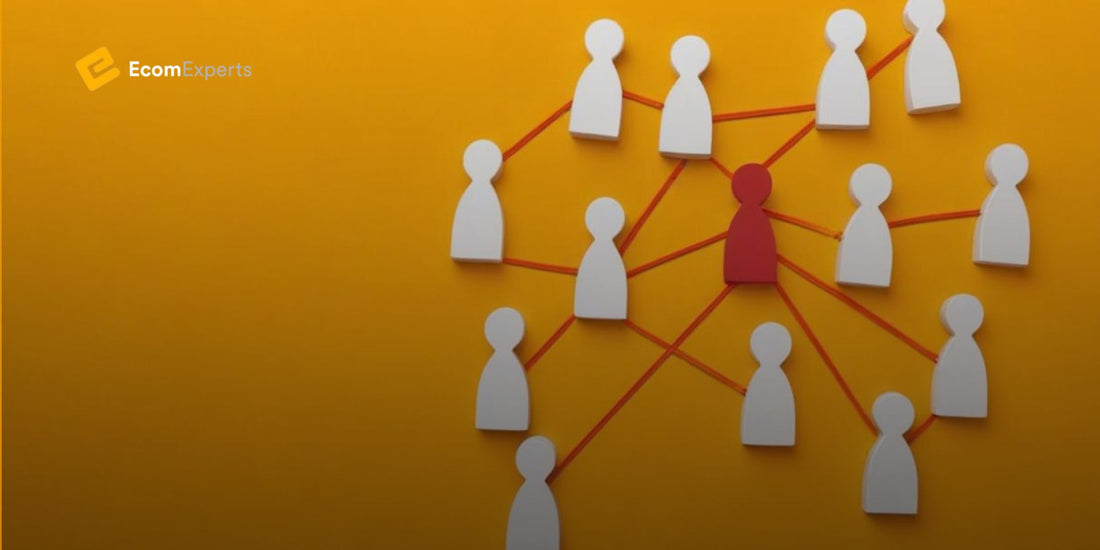Running an e-commerce store is all about growth, right? But here’s a secret that many Shopify store owners overlook: customer retention is often more powerful than customer acquisition. Sure, attracting new customers is exciting, but the real magic happens when you keep those customers coming back for more.
This is where Customer Retention Management comes into play. It’s the strategy that focuses on keeping your existing customers loyal, engaged, and happy, rather than just chasing new sales. And as we head into 2024, retention is no longer a “nice-to-have”—it’s an essential part of your e-commerce success.
For Shopify store owners, retaining customers is a game-changer. Loyal customers don’t just make repeat purchases—they also help increase your Customer Lifetime Value (CLV), reduce marketing costs, and build long-term brand advocates. In fact, research shows that increasing customer retention by just 5% can boost profits by 25% to 95%.
So why focus on retention over acquisition? It’s simple: while acquiring new customers is important, it’s also expensive. Studies suggest it costs 5x more to acquire a new customer than to keep an existing one. When you’re looking for sustainable growth, focusing on customer retention strategies can drive more revenue with less effort.
In this guide, we’ll dive into what customer retention management means for your Shopify store and reveal 10 proven strategies to help you retain your customers, boost loyalty, and ultimately grow your business in 2024.
What is Customer Retention Management?
Customer Retention Management (CRM) is all about keeping your existing customers happy, engaged, and coming back to your store—again and again. Rather than focusing on attracting new buyers, CRM centers around building long-term relationships with the customers you already have, turning one-time shoppers into loyal brand advocates.
In e-commerce, especially for Shopify store owners, customer retention management involves a series of strategies and tools that help you nurture loyalty, provide personalized experiences, and keep your customers satisfied throughout their entire journey.
From personalized email campaigns to loyalty programs and stellar customer service, CRM covers all the touchpoints that make a customer feel valued.
Customer Retention vs. Acquisition Marketing
While acquisition marketing is about getting new customers, customer retention is about keeping them. Both are essential for growing a business, but they work very differently.
- Acquisition marketing often involves higher costs (think ads, promotions, and discounts) to get new shoppers into your store.
- Retention marketing, on the other hand, focuses on maintaining relationships with those who have already made a purchase—at a fraction of the cost.
In fact, it costs 5x more to acquire a new customer than to retain an existing one. Plus, loyal customers tend to spend more and shop more frequently than new customers. They’re also more likely to recommend your store to others, giving you the benefit of organic growth through word of mouth.
Why is Customer Retention Essential for a Sustainable Business?
For e-commerce businesses, focusing on customer retention isn’t just smart—it’s essential for long-term sustainability. When you focus on retaining customers, you’re not just chasing short-term sales; you’re building a loyal customer base that brings steady, recurring revenue over time.
This stability helps you grow your business without relying on expensive acquisition campaigns to meet your revenue goals.
Retention is also tied to Customer Lifetime Value (CLV)—the total worth of a customer to your business over the course of their relationship with you. The higher your CLV, the more valuable each customer becomes.
By increasing retention, you automatically increase CLV, which translates into more revenue without the added cost of new customer acquisition.
In short, customer retention management ensures that you’re making the most out of every customer who walks through your virtual doors. It’s not just about making sales today; it’s about creating long-term value that helps your e-commerce business thrive in the future.
Key Customer Retention Metrics
Understanding your customer retention performance starts with tracking the right metrics. These key indicators give you a clear picture of how well you’re keeping customers and what their long-term value is to your Shopify store. Let’s break down the three most critical metrics: Customer Retention Rate, Customer Lifetime Value (CLV), and Churn Rate.
How to Calculate Customer Retention Rate and Why It Matters
Your Customer Retention Rate (CRR) tells you the percentage of customers who return to your store after making their first purchase. It’s a vital measure of how successful your customer retention strategies are and whether customers are sticking around long-term.
Here’s the formula:
For example, let’s say you started the month with 500 customers, gained 100 new ones, and ended with 550 customers. The calculation would look like this:
A high retention rate means you’re successfully keeping your customers coming back, while a low rate signals that you may need to improve your retention strategies.
Why It Matters:
Your retention rate is an excellent indicator of customer satisfaction and loyalty. A higher retention rate means more repeat customers, which leads to higher sales, lower marketing costs, and ultimately, more sustainable growth. Improving your retention rate by even a small percentage can dramatically impact your revenue.
Customer Lifetime Value (CLV): Why It’s Crucial for E-commerce
Customer Lifetime Value (CLV) represents the total amount of money a customer is expected to spend in your store during their entire relationship with your business. Knowing your CLV helps you understand how much each customer is worth, which is crucial when planning your marketing budget or deciding how much to invest in retention efforts.
Here’s the basic formula for CLV:
For example:
- If the average order value is $100,
- The customer makes 3 purchases per year,
- And their relationship with your store lasts for 5 years, The CLV would be:
This means that each customer is worth an average of $1,500 over their lifetime.
Why It Matters:
CLV is crucial because it shows you the true value of keeping your customers around. A higher CLV means that customers are not only coming back but spending more over time. When you focus on boosting CLV, you're not just driving short-term sales, but maximizing the long-term profitability of each customer. Knowing your CLV also helps you make more informed decisions about how much you can afford to spend on acquisition and retention strategies.
What is Churn Rate and Why Reducing It Boosts Customer Retention
Churn Rate measures the percentage of customers who stop doing business with you during a specific time period. Essentially, it’s the opposite of retention. If your churn rate is high, that means customers are leaving faster than you’re keeping them, which can be a serious drag on growth.
The formula for churn rate is:
For example, if you had 500 customers at the beginning of the quarter and lost 50 by the end of it, your churn rate would be:
Why Reducing Churn Boosts Retention:
Lowering your churn rate means fewer customers are leaving, which directly improves your customer retention rate. High churn can signal that your customers are unhappy or that your competitors are offering something more appealing.
By identifying and addressing the reasons behind customer churn—whether it’s poor customer service, slow site speed, or inadequate follow-up—you can work to improve customer satisfaction and keep them coming back. Reducing churn leads to a more loyal customer base, better revenue consistency, and lower customer acquisition costs.
Top 10 Customer Retention Strategies for 2024
To grow your Shopify store in 2024, retaining customers is more important than ever. Building a loyal customer base helps drive consistent revenue, reduce marketing costs, and improve overall business stability.
Below are the Top 10 Customer Retention Strategies to help you retain customers, increase loyalty, and boost long-term growth. Now, let’s dive into each strategy!
1. Personalized Customer Experience
In 2024, customers expect more than just good products—they want a personalized shopping experience that makes them feel understood. Personalization involves tailoring your interactions based on customer behavior, preferences, or past purchases. This can be as simple as sending personalized emails or offering product recommendations that match their browsing history.
For Shopify store owners, personalization can be a game-changer. By using tools like Klaviyo for personalized email campaigns or apps that suggest products based on purchase history, you can create an experience that keeps customers engaged and coming back for more.
Example: Imagine a customer who frequently buys skincare products from your store. Sending them a tailored recommendation for a new moisturizer or a personalized discount on their favorite product makes them feel valued and increases the chances of a repeat purchase.
2. Customer Loyalty Programs
A customer loyalty program is a great way to reward your customers for repeat purchases and keep them coming back. By offering points, discounts, or exclusive perks, you give customers an extra reason to stick with your brand.
For example, apps like Smile.io or LoyaltyLion make it easy for Shopify store owners to create loyalty programs where customers earn points for every purchase and redeem them for rewards like discounts or free shipping. A well-designed loyalty program not only encourages repeat business but also helps build a community around your brand.
Example: Think about the Starbucks Rewards program, where customers earn stars for every coffee they buy, leading to free drinks. This type of rewards system makes customers feel appreciated and motivates them to keep coming back.
3. Regular Customer Feedback and Engagement
Engaging with your customers through feedback is one of the best ways to build strong relationships and boost retention. Asking for customer opinions through surveys, encouraging product reviews, or simply following up after a purchase shows that you care about their experience.
For Shopify store owners, tools like Google Forms or apps like Judge.me (for reviews) make it easy to gather feedback. Listening to what your customers love—and what they don’t—helps you improve your products and services, which leads to higher customer satisfaction and loyalty.
Example: After a customer buys from your store, send a quick survey asking how they found the shopping experience. Not only does this show you value their opinion, but it can also highlight areas where you can improve, making them more likely to return.
4. Subscription Models
Subscription models are a powerful way to generate predictable, recurring revenue while building customer loyalty. By offering products or services on a subscription basis, you encourage customers to commit to regular purchases, making them more likely to stick with your brand over the long term.
For Shopify store owners, offering subscriptions through apps like Recharge or Bold Subscriptions can help you create a steady stream of income. Whether it’s monthly boxes, refillable products, or access to exclusive content, subscriptions make shopping easier for customers and guarantee repeat business for you.
Example: Think about Dollar Shave Club, which built its business around the idea of regularly delivering razors straight to customers' doors. Their subscription model keeps customers engaged and ensures consistent sales.
5. Segmented Email Marketing
Segmenting your email list means dividing your customers into groups based on their behavior, preferences, or purchase history, and sending them tailored content. This allows you to deliver relevant messages to each group—whether they’re repeat buyers, inactive customers, or new subscribers.
For Shopify store owners, tools like Klaviyo or Mailchimp make it easy to create personalized email campaigns. Segmented emails can lead to higher open rates, more engagement, and increased sales because customers are receiving content that speaks directly to their interests.
Example: Send special offers to your loyal, repeat customers while offering a discount to those who haven’t made a purchase in a while. This targeted approach makes your emails more effective and keeps customers coming back.
6. Offering Excellent Customer Support
Responsive and helpful customer support is key to keeping your customers happy and loyal. Whether through live chat, email, or 24/7 support, providing fast, effective assistance shows customers that you care about their experience. Great support can turn a frustrated buyer into a loyal customer.
For Shopify store owners, integrating tools like Gorgias or Tidio can help you manage customer inquiries efficiently. Quick resolutions to problems, like answering questions or resolving order issues, improve customer satisfaction and increase the likelihood they’ll shop with you again.
Example: Imagine a customer needing help with their order late at night. Offering 24/7 live chat ensures they get the answers they need immediately, reducing frustration and boosting loyalty.
7. Building Trust Through Transparency
Being transparent with your customers about your shipping, returns, and privacy policies builds trust and makes them feel confident shopping with you. Clear, upfront information reduces uncertainty, improves the shopping experience, and helps create long-term loyalty.
For Shopify store owners, make sure your policies are easy to find and simple to understand. Offering hassle-free returns and being upfront about delivery times shows that you value your customers' time and trust.
Example: If a customer knows exactly how long shipping will take and what your return policy is, they’re more likely to feel confident making a purchase, knowing they won’t face any surprises.
8. Exclusive Offers for Existing Customers
Offering exclusive deals, early access to sales, or VIP programs is a great way to reward your loyal customers and keep them coming back. These perks make customers feel valued and give them a reason to stay engaged with your brand.
For Shopify store owners, you can use tools like Klaviyo to send targeted offers or create VIP tiers where your best customers get early access to new products or special discounts.
Example: Offer your top customers early access to a holiday sale or a limited-time discount just for them. This makes them feel special and increases the chances they’ll keep shopping with you.
9. Enhancing Site Speed and User Experience
A fast-loading website and smooth user experience are crucial for keeping customers on your site. Slow load times can lead to higher bounce rates, causing customers to leave before they even browse your products. An optimized, easy-to-navigate site encourages visitors to stay longer and shop more.
For Shopify store owners, using tools like PageSpeed Insights or working with agencies like Ecom Experts to optimize site speed can drastically improve the user experience, leading to better retention and more conversions.
Example: A faster website means customers can quickly browse and make purchases without frustration, increasing the likelihood of them returning for future purchases.
10. Retargeting & Remarketing Campaigns
Retargeting campaigns are an effective way to bring back customers who left your site without making a purchase. By showing targeted ads to these visitors across platforms like Facebook or Google, you remind them of the products they viewed and encourage them to return and complete their purchase.
For Shopify store owners, tools like Facebook Pixel and Google Ads help you set up these campaigns easily. Retargeting keeps your brand in front of potential customers and improves the chances of recovering lost sales.
Example: A customer visits your store, adds a product to their cart but leaves without checking out. Later, they see an ad for that exact product with a discount, prompting them to come back and finish the purchase.
How to Maximize Customer Retention: Practical Steps
Now that you’ve learned the top customer retention strategies, let’s look at a few additional cost-effective ways to start improving customer retention in your Shopify store today. These practical steps don’t require a huge budget but can have a big impact on keeping your customers loyal.
1. Create a Seamless Post-Purchase Experience
- Don’t let the customer experience end once they hit "Buy." Send post-purchase emails that confirm their order, provide shipping updates, and offer helpful tips related to their purchase. This keeps customers engaged and reassures them that you value their order.
- Include a “Thank You” note or coupon for their next purchase in your follow-up emails. It’s a simple way to encourage repeat sales.
2. Build a Customer Community
- Creating a community around your brand helps foster deeper loyalty. Use social media groups, like a Facebook group or Instagram community, to give your customers a space to connect with each other and with your brand.
- Encourage discussions, share tips, and even offer exclusive content or deals for community members. The sense of belonging can turn casual customers into loyal advocates.
3. Highlight User-Generated Content (UGC)
- Showcase your loyal customers by featuring their photos or testimonials on your website or social media. People love seeing their contributions recognized, and it makes your brand feel more relatable and authentic.
- You can create a hashtag for your store and encourage customers to share their purchases, offering a small discount in exchange for their posts.
4. Send Personalized “We Miss You” Campaigns
- If you notice a customer hasn’t purchased in a while, send them a “We Miss You” email with a small discount or a personalized recommendation based on their past purchases. It’s a friendly reminder that you value their business and encourages them to come back.
- These re-engagement campaigns can be automated using tools like Klaviyo, making it easy to reach out to inactive customers.
5. Introduce Limited-Time “Surprise” Offers
- Every now and then, surprise your loyal customers with a flash sale or a limited-time offer that’s exclusively for them. Unexpected rewards can create excitement and prompt quick purchases. Make it clear that it’s for a limited time to create urgency.
- You can easily set up these flash sales on Shopify using apps like Bold Discounts to manage the timing and discounts automatically.
6. Focus on Consistent Branding Across Channels
- Keep your messaging and branding consistent across your website, social media, and emails. A unified voice builds trust and makes customers feel comfortable coming back because they know what to expect.
- Consistent branding also helps build a stronger emotional connection with your customers, making your store memorable even when they aren’t actively shopping.
Key Takeaway:
Focusing on the post-purchase experience, building a community, and staying consistent with your brand messaging can all help boost customer retention. These practical steps, combined with a personalized approach, will keep your customers engaged and coming back for more, even on a smaller budget.
Conclusion
Customer retention is the backbone of any successful e-commerce business, and by focusing on the right strategies, you can turn one-time buyers into loyal, repeat customers. From personalizing the customer experience to implementing loyalty programs and improving site speed, each tactic plays a crucial role in keeping your customers engaged and ensuring they come back for more.
By leveraging subscription models, collecting customer feedback, and using retargeting campaigns, you create an ecosystem that not only encourages repeat purchases but also strengthens your brand’s relationship with its audience. In 2024, focusing on retention isn’t just a good strategy—it’s a necessity for growth and long-term success.
How Ecom Experts Can Help You Maximize Retention
If you’re ready to take your Shopify store to the next level and improve customer retention, Ecom Experts can help. Our team specializes in:
- Conversion Rate Optimization (CRO): Ensuring your store turns visitors into buyers through smart design and seamless user experience.
- Custom Builds: Tailoring your Shopify store to fit your brand and customer needs, enhancing both usability and aesthetics.
- Site Speed Optimization: We’ll make sure your store loads quickly and efficiently, keeping customers engaged and reducing bounce rates.
Don’t leave your retention strategy to chance—reach out to Ecom Experts today and let’s build a Shopify store that keeps your customers coming back for more.
FAQs
Q1. What is customer retention management?
Customer Retention Management (CRM) refers to the strategies and processes used to keep customers coming back to your business. It focuses on building long-term relationships with existing customers by providing great service, personalized experiences, and rewards that encourage repeat purchases.
Q2. How can I maximize customer retention?
You can maximize customer retention by:
- Offering personalized shopping experiences through tailored recommendations and emails.
- Implementing a loyalty program to reward repeat customers.
- Providing excellent customer support to resolve issues quickly.
- Collecting and acting on customer feedback to improve your offerings.
- Ensuring a smooth and fast user experience on your website.
Q3. Why is customer retention important for my e-commerce business?
Customer retention is important because it costs less to retain existing customers than to acquire new ones. Retained customers are more likely to make repeat purchases, increasing their lifetime value and helping you generate steady revenue. Loyal customers also tend to recommend your brand to others, driving organic growth.
Q4. What are the best customer retention strategies in 2024?
The best customer retention strategies in 2024 include:
- Personalization through emails, recommendations, and offers.
- Offering loyalty programs and exclusive deals for existing customers.
- Using retargeting ads to bring back customers who didn’t complete a purchase.
- Providing exceptional customer service through live chat or 24/7 support.
- Creating subscription models for recurring purchases and predictable revenue.
Q5. How do I retain customers in a Shopify store?
To retain customers in a Shopify store:
- Use personalized marketing through tools like Klaviyo to send tailored messages.
- Offer VIP programs or points-based loyalty programs with apps like Smile.io.
- Ensure your website is fast and user-friendly by optimizing site speed and improving navigation.
- Provide clear, transparent policies around shipping and returns to build trust.
- Implement remarketing campaigns with tools like Facebook Pixel to re-engage visitors.


